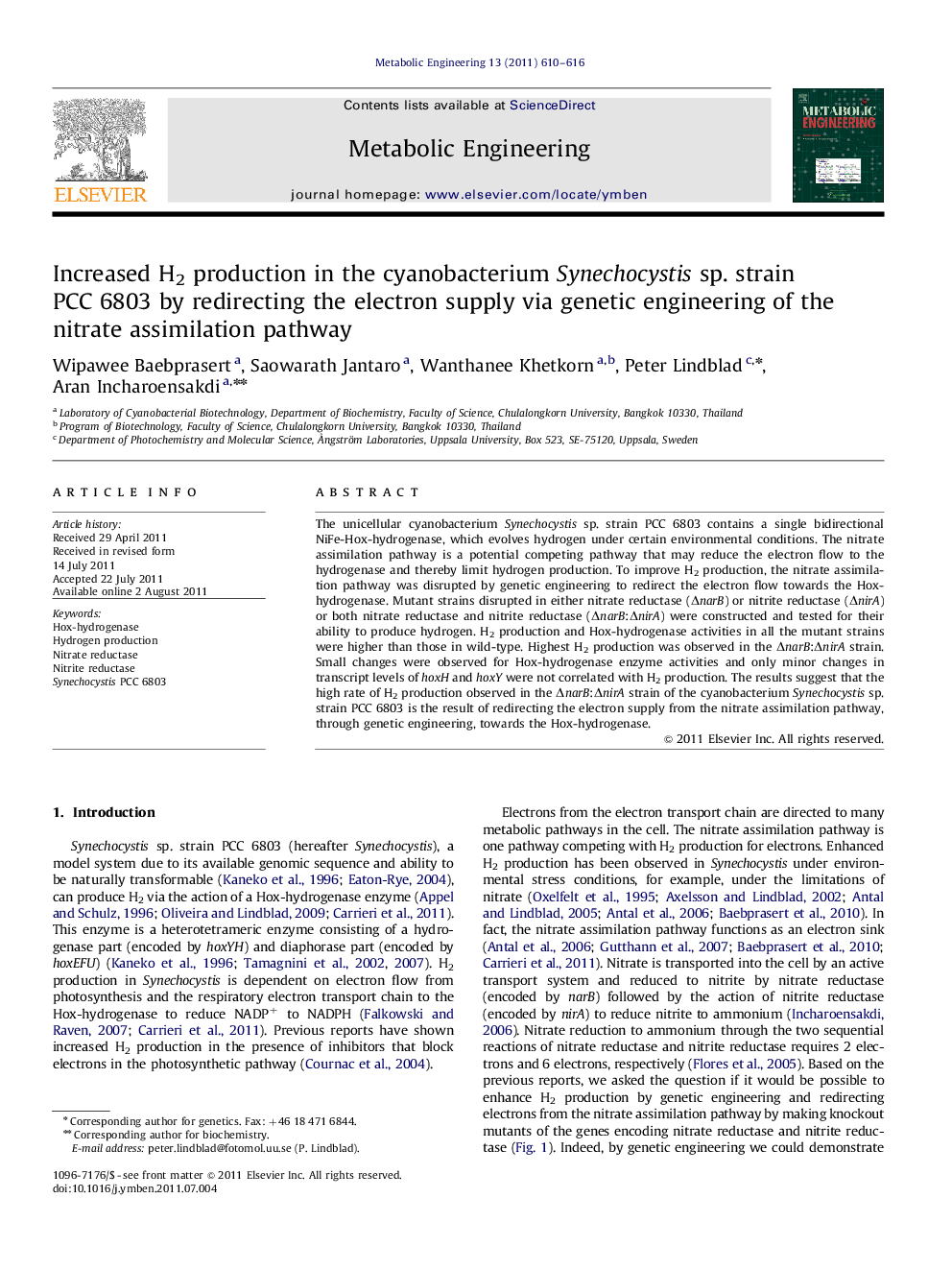| Article ID | Journal | Published Year | Pages | File Type |
|---|---|---|---|---|
| 31620 | Metabolic Engineering | 2011 | 7 Pages |
The unicellular cyanobacterium Synechocystis sp. strain PCC 6803 contains a single bidirectional NiFe-Hox-hydrogenase, which evolves hydrogen under certain environmental conditions. The nitrate assimilation pathway is a potential competing pathway that may reduce the electron flow to the hydrogenase and thereby limit hydrogen production. To improve H2 production, the nitrate assimilation pathway was disrupted by genetic engineering to redirect the electron flow towards the Hox-hydrogenase. Mutant strains disrupted in either nitrate reductase (ΔnarB) or nitrite reductase (ΔnirA) or both nitrate reductase and nitrite reductase (ΔnarB:ΔnirA) were constructed and tested for their ability to produce hydrogen. H2 production and Hox-hydrogenase activities in all the mutant strains were higher than those in wild-type. Highest H2 production was observed in the ΔnarB:ΔnirA strain. Small changes were observed for Hox-hydrogenase enzyme activities and only minor changes in transcript levels of hoxH and hoxY were not correlated with H2 production. The results suggest that the high rate of H2 production observed in the ΔnarB:ΔnirA strain of the cyanobacterium Synechocystis sp. strain PCC 6803 is the result of redirecting the electron supply from the nitrate assimilation pathway, through genetic engineering, towards the Hox-hydrogenase.
► We create mutants of Synechocystis 6803 disrupted in the nitrate assimilation pathway. ► Engineered cells show significantly higher H2 production. ► Only minor changes in transcript and activity of Hox-hydrogenase in engineered cells. ► High rate of H2 production by redirecting the electron flow to the Hox-hydrogenase.
